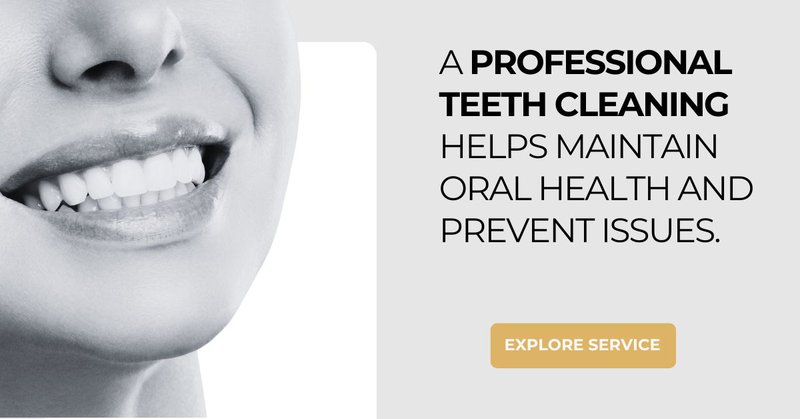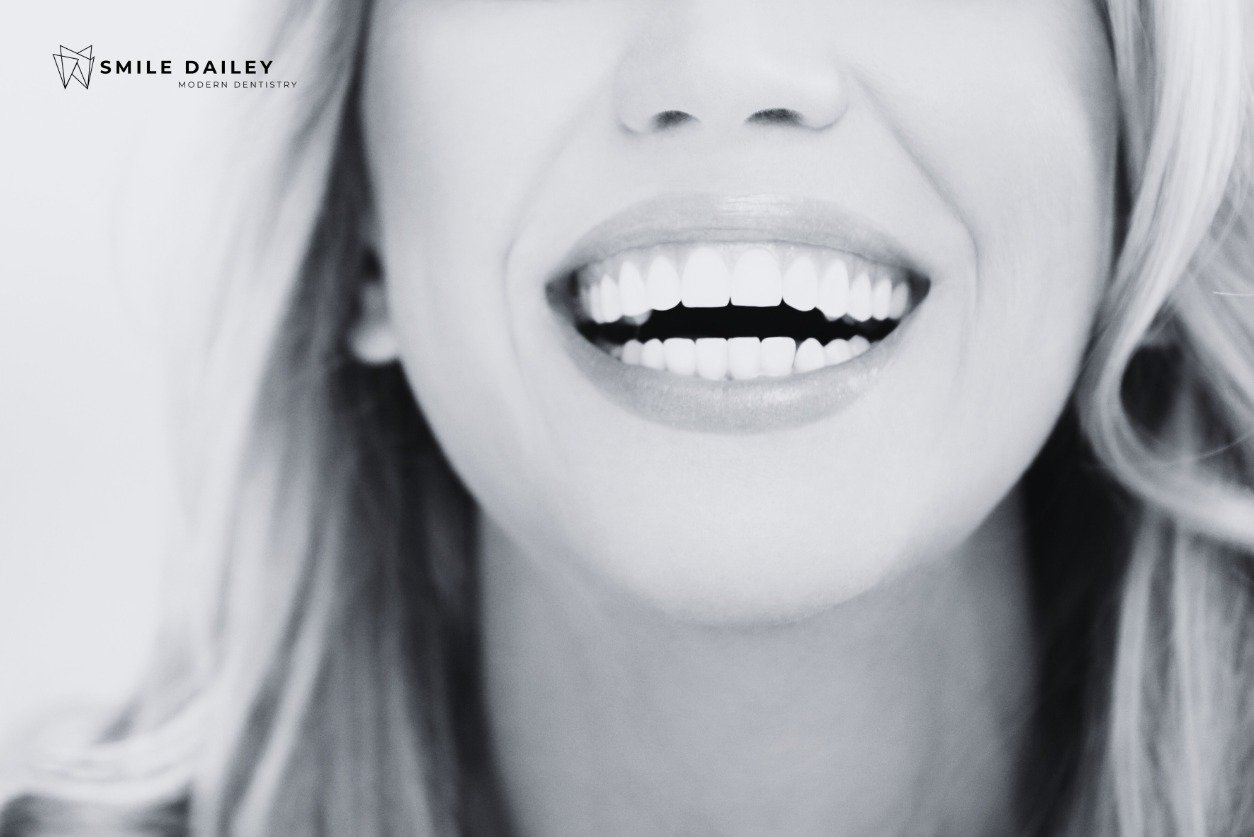Regular teeth cleanings do more than maintain a great smile—they protect your health. Plaque and tartar buildup can lead to cavities, gum disease, and more serious problems if left untreated. But what exactly happens during a professional cleaning? If you're unsure what to expect, don’t worry. This guide will walk you through the process, explain deep cleanings, break down costs, and provide expert aftercare tips. Let’s keep your smile healthy and strong!
Key Takeaways:
- A professional teeth cleaning includes an exam, plaque and tartar removal, polishing, flossing, rinsing, and an optional fluoride treatment.
- Deep cleaning (scaling and root planing) removes tartar from deep gum pockets and treats gum disease.
- Costs: Regular cleaning: $75–$200; Deep cleaning: $600–$1,400; Full-mouth debridement: $75–$150. Insurance may cover regular cleanings but only a portion of deep cleaning costs.
- Benefits: Prevents cavities, gum disease, bad breath, and expensive dental procedures.
- Aftercare: Avoid hot, cold, acidic, crunchy, and sugary foods after deep cleaning. Use a soft toothbrush and floss gently.
- At-home plaque removal helps but cannot remove tartar. DIY scaling is risky. Professional cleanings are essential to prevent gum disease and tooth decay.

Common Steps in Professional Teeth Cleaning Procedures
A professional teeth cleaning helps maintain oral health through several steps.
Physical Examination of the Teeth and Gums
A dental hygienist begins by examining your teeth and gums with a small mirror. This initial step helps identify cavities, swollen gums, or signs of gum disease. If they notice any serious concerns, they may then consult the dentist before proceeding.
Removal of Plaque and Tartar
Plaque is a sticky film of bacteria that can harden into tartar, leading to gum disease. Even with regular brushing and flossing, tartar can only be fully removed by a professional.
The hygienist uses two tools to remove buildup:
- A manual scaler scrapes tartar from the teeth and gum line.
- An ultrasonic scaler uses vibrations and water to break apart larger tartar deposits.
This process may take longer if there is significant buildup.
Polishing with Professional-Grade Toothpaste
Next, a high-powered electric brush is used to polish the teeth. The grainy toothpaste effectively removes surface stains and smoothens the enamel, making it harder for plaque to stick.
However, some patients find this step noisy or feel the texture of the paste is unusual. Nevertheless, it is safe when performed professionally. Conversely, overusing gritty toothpaste at home can wear down enamel; therefore, it should be reserved for office cleanings.
After polishing, the hygienist carefully flosses to remove any remaining debris. This is more thorough than daily flossing.
Rinsing and Fluoride Protection
You will then be given a fluoride rinse to clear away loose particles and refresh your mouth. In some cases, the hygienist will also apply a fluoride treatment to strengthen enamel and prevent cavities. This may come in the form of a gel, foam, or varnish. Additionally, the varnish hardens quickly, so eating and drinking can resume immediately afterward.
Why Regular Teeth Cleaning Procedures Matter
Scheduling a professional cleaning every six months helps prevent excessive plaque and tartar buildup. Regular visits reduce the risk of cavities and contribute to a cleaner, brighter smile.
Deep Cleanings versus Regular Cleanings
A deep cleaning is more extensive than a regular cleaning. Routine cleanings focus on surface plaque, tartar, and stains, using standard scraping and polishing techniques. These are typically performed every six months.
A deep cleaning, also known as scaling and root planing, targets areas beneath the gums. This procedure removes bacteria and tartar from deep pockets that form due to gum disease (periodontitis). If left untreated, these pockets can lead to infection and, eventually, tooth loss.
Differences Between Scaling and Root Planing vs. Routine Cleaning
Scaling removes tartar from both the crowns of teeth and beneath the gumline. Root planing then smooths the roots to help gums reattach. Routine cleanings do not reach these deeper areas and are intended for general maintenance rather than disease treatment.
When Deep Cleaning is Necessary
Dentists recommend deep cleaning for individuals showing signs of gum disease. If you have swollen or bleeding gums, persistent bad breath, or deep gum pockets, a deep cleaning might be necessary. Addressing these issues promptly can prevent further damage and tooth loss.
Side Effects and Recovery
After deep cleaning, gums may feel sore, swollen, or slightly irritated. Mild bleeding can occur during brushing for a few days. Sensitivity may increase because the tartar that once covered certain areas of the roots has been removed. Dentists sometimes prescribe antibiotics to assist the healing process.
Practicing good oral hygiene at home and keeping up with dental checkups also help maintain gum health after treatment.
Approximate Cost of Different Teeth Cleaning Procedures
Teeth cleaning costs depend on the type of procedure.
- Regular cleaning (prophylaxis): $75 to $200 without insurance.
- Deep cleaning (scaling and root planing): $150 to $350 per quadrant, totaling $600 to $1,400 for the full mouth.
- Full-mouth debridement (for heavy tartar buildup): $75 to $150.
Dental insurance coverage varies. Most plans cover two regular cleanings per year at low or no cost. Deep cleanings typically receive only partial coverage, leading to some out-of-pocket expenses.
For those without insurance, alternate options include membership plans at dental offices or discounted treatments from dental schools, where students work under supervision.
The Benefits and Drawbacks of Professional Teeth Cleaning Procedures
Professional cleanings remove plaque, tartar, and bacteria that contribute to cavities and gum disease. Even with proper oral care, some buildup remains. Left untreated, plaque hardens into tartar, leading to inflammation and infection.
Cleanings also help combat bad breath by eliminating bacteria caught between the teeth. Afterward, your teeth feel polished and refreshed, improving your smile’s appearance.
Deep cleanings are necessary for treating gum disease. By removing bacteria from below the gums, this procedure allows the gum tissue to heal and reattach to the teeth. Some individuals experience mild discomfort during and after deep cleaning, including gum soreness, swelling, or temporary sensitivity. In rare cases, slight gum recession may also occur.
Routine cleanings catch dental problems early, lowering the risk of more invasive, costly treatments. Since oral bacteria can contribute to heart disease and diabetes, maintaining professional cleanings also supports overall health.
Delaying cleanings increases the chance of cavities, gum disease, and tooth loss. Plaque and tartar weaken teeth over time, leading to more serious issues. Regular cleanings help prevent infections and promote long-term oral health.
Aftercare Tips Following a Dental Cleaning
Teeth may feel smoother after a cleaning, but mild sensitivity or gum tenderness is common. This typically resolves within a few days. Rinsing with warm salt water and using a soft toothbrush can ease discomfort.
Foods and Drinks to Avoid After Teeth Cleaning Procedures
Teeth are more sensitive immediately following a cleaning, especially a deep cleaning. For the first 24 hours, avoid:
- Hot or cold drinks – Temperature changes can trigger sensitivity.
- Acidic foods like citrus and tomatoes – These may irritate the gums.
- Crunchy snacks, like chips or popcorn – Hard foods can be rough on sore gums.
- Sugary treats, like soda and candy – Sugar promotes bacterial growth.
If a fluoride treatment was applied, wait 30 minutes before eating or drinking. Fluoride varnish strengthens and protects teeth.
Home Plaque Removal Methods versus Professional Teeth Cleaning Procedures
Brushing and flossing remove plaque but cannot clear all buildup. Plaque that hardens into tartar requires professional cleaning.
Why Professional Cleanings Are Necessary
At-home tools, like plaque scrapers or antiseptic rinses, help maintain hygiene but cannot replace professional care. Improper tool use can damage enamel or injure gums.
Dentists use specialized instruments to safely clean teeth, identify early signs of disease, and prevent costly treatments. Routine professional cleanings play a critical role in maintaining oral health.
Refresh Your Smile with Professional Teeth Cleaning
A brighter, healthier smile starts with regular professional cleanings! At Smile Dailey Dental, our expert team uses advanced techniques to remove plaque, tartar, and stains, helping you maintain optimal oral health and a radiant smile. Don't wait until problems arise—schedule your teeth cleaning today and enjoy the confidence of a fresh, healthy smile!

